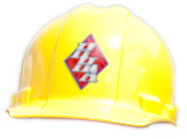source credit: DepositPhotos
Reduce the common allergens that make you miserable with the help of an air purifier
How do they work—and do air purifiers work effectively?
Allergic rhinitis (commonly known as hay fever), as well as an allergy to pet dander, smoke, and/or dust, can make you feel as miserable as the common cold—one you can’t seem to shake (because, alas, there’s no cure for allergies). No wonder the constant sneezing, wheezing, and itchy, watery eyes have you seeking solutions! Seasonal allergies can also be a trigger for those who suffer from asthma, and exposure to increased levels of pollen and other allergens can cause flare-ups. Fortunately, whether your suffering is due to pollen in the air or your boyfriend’s cat sitting on your lap, an air purifier may provide you with some relief. Here’s how these handy little appliances can make living with allergies a bit more bearable.
An air purifier eliminates many common causes of allergies.
An air purifier is a small device designed to remove such airborne contaminants as pet dander, smoke, and dust. According to the Environmental Protection Agency (EPA), a portable air cleaner is one of the most effective ways to improve the indoor air quality in a single room or area. However, no matter the quality of the air purifier you buy, there’s no model in the world that can banish all of the pollutants in your home.
Air purifiers use filters to “trap” pollutants.
Here’s how an air purifier works: Air gets sucked into the device via an internal fan system, which is then passed along to the filter inside. The filter traps airborne pollutants like dust and then a fan pushes clean air out into the room. There are two basic types of air filters in air purifiers: One eliminates particles and one removes gases—some of these even purport to remove volatile organic compounds (VOCs).
Check the packaging for acronyms that indicate effectiveness.
If you want an air purifier to remove particles like dust, dirt, and soot, check the packaging or product description for a clean air delivery rate (CADR). The higher the CADR, the more particles it can trap. Another sign of an effective air purifier is the use of a high-efficiency particulate air (HEPA) filter. An air purifier with a HEPA filter is likely to have a relatively high CADR.
You’ll know it’s working when you see the evidence.
You never know just how contaminated the air inside your home is until you use an air purifier and see the particles collected on the filter. Depending on the model, you can just pop off the back panel to take a peek inside at the filter. These generally need to be changed about twice a year, or whenever the filter looks completely full.
But will you feel any different? Hopefully, yes—and perhaps in more ways than one. A small-scale study found that air purifiers not only reduced fine particulate matter in the air (dust, pollen, dander) but also improved participants’ blood pressure levels and lung function.
If you’re not feeling a positive effect on your allergy symptoms after using an air purifier for a month or two, you might want to reevaluate its placement in the room (maybe moving it closer to your bed or couch or further away from a door or window). If you notice an improvement at first only to have it wane, remember to check the filter to see if it needs to be changed.
An air purifier won’t eliminate mold or the issues mold can cause to your health and your home.
Some people are allergic to household mold (often caused by water damage inside the home), with some symptoms similar to those of seasonal, dust, and animal dander allergies. Unfortunately, air purifiers aren’t designed to remove mold, nor can the devices eliminate the musty odors associated with mold. To solve the problem, investigate and repair the source of any water damage and then contact a mold remediation service, professionals that use antimicrobial agents to remove mold.
Severe allergy or asthma sufferers should consider an air purifier.
If routine allergies or asthma symptoms negatively impact your life, the evidence that a HEPA filter improves respiratory health may encourage you to shop around for an air purifier. The best air purifiers generally cost between $200 and $900 on the high end, but since it’s recommended to run them constantly, expect a spike in your electricity bill. Though some devices are more energy-efficient than others, the average HEPA air purifier will consume 50 to 200 watts of electricity and run you an extra $30 to $90 annually to keep them plugged in and working. If you’re concerned about your bottom line, look for the blue ENERGY STAR sticker when shopping to take home a certified model that uses 40 percent less energy to operate.
source credit: https://bit.ly/2Jf7fRU


